Service Dog Training
27.10.2020.
We know that dogs can perform a wide variety of tasks that were entrusted to them by humans. We used dogs as hunting companions for more than 20.000 years, and some historians say that is the main reason why the human-canine bond was created. Over the past 100 years, we started to realize that dogs can be used for assistance, and that is where service dogs step on the scene.
Not all dogs can become service dogs. Some are too distracted, and there is special training a service dog should receive.
What is a service dog?
According to the Americans with Disabilities Act, a service dog is “a dog specifically trained to perform work for a person with a disability.” That means that every service dog is trained to help one person and cater to their unique needs. There are special service dog training courses to prepare dogs to help the blind or people with any kind of physical or mental disabilities.
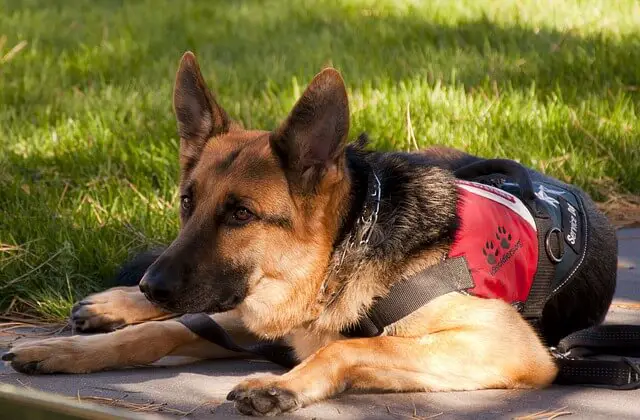
What type of service dogs are there?
In this modern world, the term service dog is often too liberally used, and people decide just to name their dogs “service dogs.” Service dogs can be put in eight groups, and those groups are:
- Guide dogs
- Hearing dogs
- Seizure response dogs
- Autism service dogs
- Medical alert dogs
- Allergy detection dogs
- PTSD dogs
- Diabetic alert dogs
These are the roles that proper service dogs can perform, and other types like the “emotional support dogs” are not considered a service animal. Emotional support dogs provide support to their handlers and are not trained to perform a specific task for a person with disabilities. Under the ADA, a proper service dog needs to perform a particular task to help a disabled person lead an everyday life.
What breeds are allowed to become a service dog?
The ADA does not ban any dog from becoming a service dog. Even adopted, mixed-breed dogs can become a service dog if trained to perform a specific task. Certain dog breeds have a specific character that allows them to be great service dogs, which is why they are most commonly used.
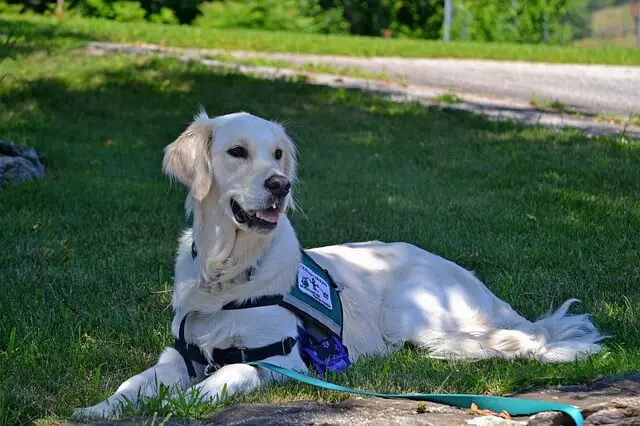
What are the most popular service dog breeds?
Service dogs can be small and big; the only question is what tasks they are trained to perform. If a person with walking disabilities needs a service dog to assist in walking, then getting a small service dog breed would not be the best idea. The most popular service dog breeds are:
- Labrador Retriever
- Golden Retriever
- Great Dane
- Poodle
- German Shepherd
- Border Collie
- Bernese Mountain Dog
- Saint Bernard
- Belgian Shepherd
What is a service dog like?
Service dogs, as we can see, come in different sizes and energy levels. However, they do share common characteristics that one should look for in a service dog. They are highly trainable, intelligent (service dog list is similar to the smartest dog list), calm, and usually have a peaceful demeanor with the ability to concentrate on their handler at all times.
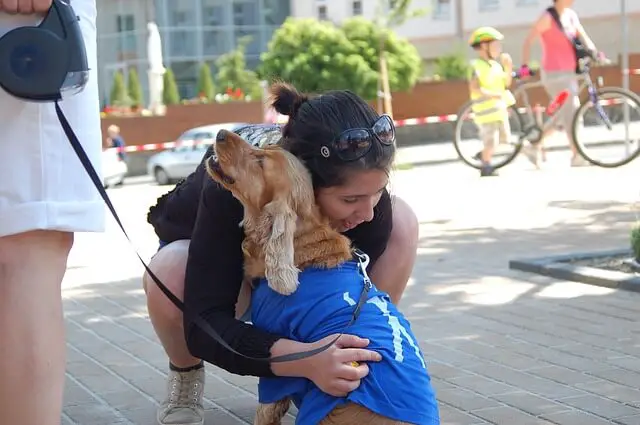
Service dog training
Service dogs can provide help in numerous situations, and they can significantly improve the lives of their handlers. However, training a service dog can be rather long and expensive. Training costs can get as high as 25.000$ in the US, depending on what task a service dog is trained to do.
Service dogs can perform very complex tasks, and their training can last up to two years. All professional service dog trainers start by planning a training course and assessing the dog’s capabilities.
The first step in training a service dog is to teach them basic commands like “sit,” “heel,” “stay,” or “lay down.” This will give the trainer a clear insight into the dog’s capabilities and potential for becoming a service dog.
The second step is to start testing the dog’s ability to follow commands under particular circumstances. Trainers start including distractions, food, people, crowded places, and traffic. A good service dog should always follow your commands, no matter where they are and what distractions are around them.
The third and most crucial step is to train the dog on the specific tasks they need to perform for their handler. These tasks can include complex and challenging things like dialing 911 in a case of emergency to closing doors, shutting off lights, etc. It all depends on what the disabled persons needs are.
To qualify as a service dog, the dog needs to successfully fulfill a task on the first command in 90% of the time. Complex training can last up to 2 years, so it is no wonder that a professionally trained service dog’s price is high.
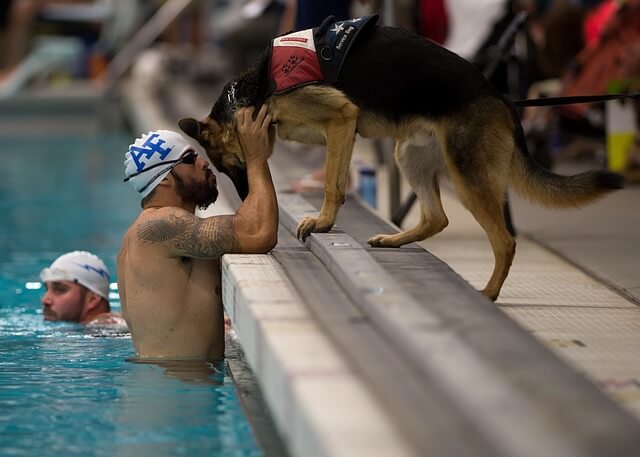
Can service dogs be trained at home?
Yes, you can train a service dog yourself, but it is very impractical in most cases. Professional trainers have experience and have dedicated their lives to training service dogs. They will know how to spot potential problems or character traits unfit for a service dog that someone without experience in service dog training wouldn’t.
The ADA allows home or self-trained dogs to register as service dogs, so if you have the time and resources to train the dog yourself, feel free to do it. Just keep in mind that one or two years of training is a long time, and even professional trainers can’t guarantee that a certain dog will “graduate” to a full-service dog.
Does a service dog have to wear identification?
Under American law, a service dog is not required to wear any kind of identification, such as tags or vests. Service dog vests are usually put on dogs so that people that encounter a service dog know how to act. Most of us like to pet or approach dogs when we meet them, and the truth is that service dogs are not pets. They are working, trained animals that are on duty 24/7, and should not be disturbed.
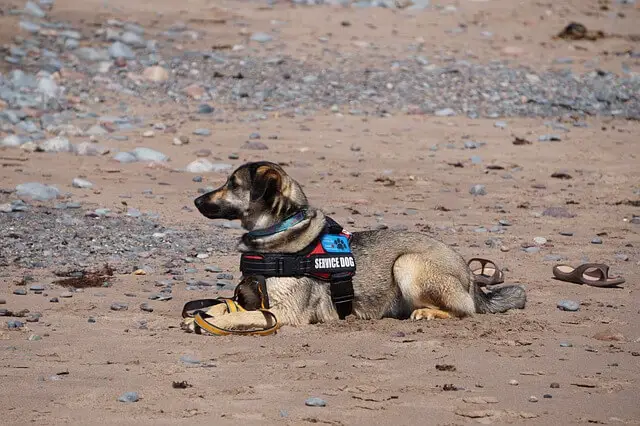
Can a service dog be denied entrance to public places?
To deny entrance to a disabled person and their service dog is against the law. People with disabilities are required to have all the same opportunities as everyone else. It is also essential to distinguish a service dog from an emotional support dog that isn’t considered a service dog. If you are a business owner and have a customer with a service dog, you are allowed by law to ask two questions;
- Is the dog a service animal required because of a disability?
- What work or task has the dog been trained to perform?
You and your staff shouldn’t ask about the nature of the disability, ask for documentation of a service dog, or ask for a demonstration of the task the dog is trained to do.
That is the easiest way to distinguish a service dog from an emotional support dog that can be denied access, and their handler is not a person with a disability.
World Dog Finder team

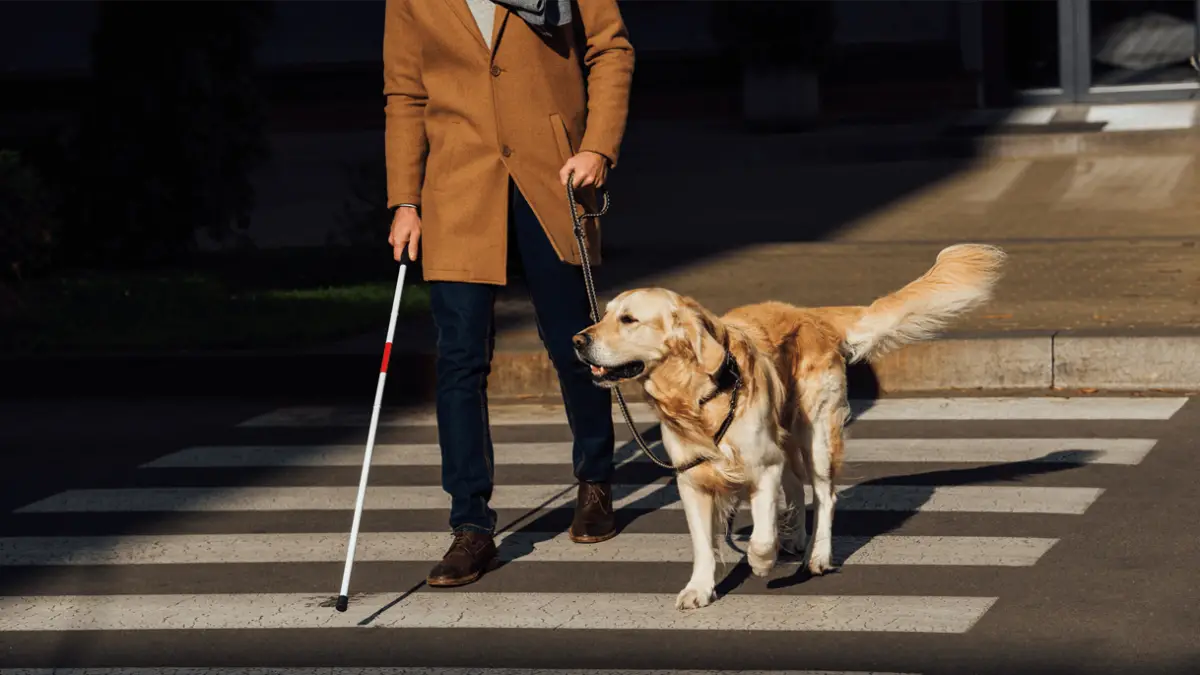





Share